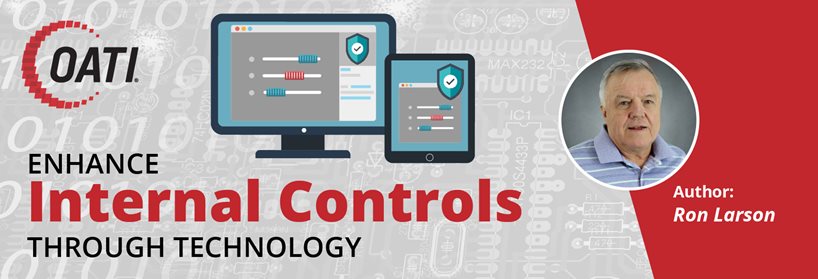Home » Blog » Trading & Risk Management » Enhance Internal Controls through Technology
Enhance Internal Controls through Technology
Early history of internal controls dates back to Hellenistic Egypt, which covers the period of history between the death of Alexander the Great in 323 BC and the emergence of the Roman Empire as signified by the battle of Actium in 31 BC. During this time period in Egypt, there existed a dual administration; one set of bureaucrats collected taxes and the other set supervised and monitored the tax-collecting bureaucrats. Fast forward to the 21st century, and you’ll realize that similar systems of checks and balances are still being carried out in some form or shape.
Internal control is a key element in the success of an organization. With the passage of the Foreign Corrupt Practices Act (FCPA) in 1977 and the Sarbanes-Oxley Act of 2002, the formalization of internal control processes as we know it today were defined and made part of everyday life for entities throughout the U.S. The primary purpose of proper controls are to improve operational effectiveness to ensure that the organization has reliable financial statements and to improve compliance with laws and regulations.
For example, in an energy trading shop the internal controls are focused on the separation of duties between the front, middle, and back office operations. A specific control would be that energy traders are only allowed to enter a trade and make adjustments to positions through other trades. The middle office would evaluate the trade to assess if it meets trading risk parameters and the back office would confirm the trade and ensure that payments to third parties are for valid trading activities. Before the advent of highly integrated software solutions, the control and separation of duties between the three departments relied on paper trails, which made for more complex auditing procedures to confirm that the intended controls were followed.
With technological advancements in automation engineering that has led to the automation and optimization of processes, organizations can now save significant time and become more efficient by eliminating complex paper flows and spreadsheets. The auditing and accounting operations have also become equally effective through the use of systems that track and report on activities of the organization. Elimination of manual, error-ridden processes have increasingly led to streamlined processes and operational optimization that in turn have led to enhanced return on investment (ROI).
If your organization is in need of a more effective control system, you need to take action and consider a system from OATI. OATI has developed its applications to feature role-based authorization to assist with the development of proper controls. Role definitions can be configured by the solution administrator to model job functions and internal control roles with each user assigned one or more roles by the system administrator, and all transactions are recorded and logged for accounting and auditing requirements. For instance, OATI energy accounting software, powered by webAccounting engine, provides the capabilities for wholesale energy accounting and reporting. Visit oati.com for more information on the different automated systems that are helping utilities re-envision their profitability stories while resolving the challenges posed by the ongoing transformation within the energy industry.
About the Author:
Mr. Ron Larson, Vice President of Account Sustainment at OATI, has over 40 years of experience in the utility industry, as well as a broad background and wide-range of experience in strategic and financial planning, business development, corporate growth management, operations management, enterprise risk management, market operations, energy trading, and board of director leadership. He served as Chief Financial Officer in a large mid-western Generation and Transmission Cooperative, as well as Chief Executive Officer of an asset management and energy trading organization.
- July 26, 2018
